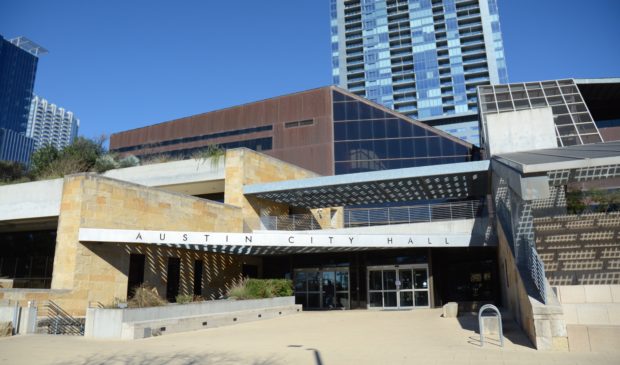Newsletter Signup
The Austin Monitor thanks its sponsors. Become one.
Most Popular Stories
- Austin opens new affordable housing development in Southeast Austin
- Landmark commission says goodbye to Nau’s Enfield Drug
- ZAP Commission forwards recommendation allowing some commercial uses in residential zones
- After a decline last year, Travis County homeowners should expect a return to rising property taxes
- Ryan Alter and colleagues propose revision of boards and commissions
-
Discover News By District

Spirit of East Austin lives on
Wednesday, July 25, 2018 by Jack Craver
After a lengthy public engagement process, the city of Austin has released a report detailing key steps the city can take to improve services and quality of life for those living in Austin’s “eastern crescent.”
During the spring of 2017, city staff held “community table talks at more than 35 different locations throughout East Austin,” according to Ray Baray, chief of staff to City Manager Spencer Cronk, in the July 13 memo releasing the report. These talks were aimed at getting feedback from residents from “those who do not usually attend community engagement events.” The effort was part of what the city has dubbed the “Spirit of East Austin,” an ongoing initiative to “break down barriers to jobs and opportunities east of I-35.”
“Staff travelled to soccer games, churches, Easter egg hunts, libraries, recreation centers, mobile home parks, school events, and job fairs, all in an effort to ask the community their thoughts on a set of concepts and ideas intended to create significant change in the Eastern Crescent,” the memo says.
Through that process the city gathered 866 comments, 20 percent of which were in Spanish.
Based on that feedback, staff presented 45 potential ideas and initiatives to a City Council work group that included Mayor Steve Adler and Council members Ora Houston, Pio Renteria, Leslie Pool and Ellen Troxclair.
The work group was supposed to narrow down the list of initiatives, and it didn’t find that task easy: The final list includes 34. The report divides the initiatives into six categories: health/environment, housing, jobs, transportation, safety and equity.
The health and environment category includes seven proposals aimed at increasing access to health care, quality food and interaction with the environment.
One of the biggest concerns is the persistence of food deserts – areas of the city where people can’t easily buy fresh, affordable food.
The city has already begun small-scale efforts to make up for the absence of grocery stores in such areas by partnering with nonprofits to provide fresh food at corner stores and to deploy “mobile markets” that pop up in highly trafficked public sites. Similarly, the city has funded seven “farm stands” that offer produce in low-income areas. The city reports that the six mobile markets and five farm stands that operated in 2017 received 2,824 customer visits and sold $22,000 worth of goods.
Other ideas for addressing food insecurity remain vague, such as increasing the number of grocery stores or creating a “community-powered Eastern Crescent integrated farm, food processor and farm-to-table restaurant.”
Another health idea is to create a “health and wellness center” in Central East Austin, similar to a facility that Central Health began operating this spring at Overton Elementary.
The report does not propose much for housing beyond the general ideas that have been tossed around in recent years. It endorses the city’s Strategic Housing Blueprint, which calls for the creation of 100,000 units affordable to those at 60 percent of the median family income, and it proposes the development of a city strike fund to buy and manage multifamily housing aimed at middle-income people who make too much money to qualify for traditional income-restricted housing. It also encourages the Austin Housing Finance Corporation to acquire surplus properties that the Austin Independent School District or Travis County are trying to offload, potentially through money included in the $250 million affordable housing bond that Council will likely ask voters to approve this fall.
In terms of jobs, the report focuses on boosting training for jobs of the future, notably in tech, for children and adults alike. It proposes a new training center and encourages the city to “incentivize” paid internships for East Austin high school students that will connect them to careers.
It also highlights examples of initiatives that the city should seek to replicate, such as the Community First! Village, a master-planned neighborhood created by Mobile Loaves & Fishes that provides housing and services to people experiencing homelessness, as well as thinkEAST, a 24-acre mixed-use development combining affordable housing, retail and creative space.
On transportation, the report lauds Capital Metro’s proposed Green Line that would provide commuter rail service between downtown, East Austin, Manor and Elgin.
The report identifies two ideas for safety. The first focuses on promoting “immigrant inclusion” through policies that increase education and good-paying job opportunities for immigrants as well as “removing barriers to their full and equal participation” in the community. The second idea is to establish restorative justice circles, facilitated by government entities and law enforcement, where offenders can meet with victims of their crimes and make amends.
Finally, the report encourages the city to continue to reduce institutional racism and bias in its own practices, through training and by assessing its own programs through a racial equity lens.
Photo by John Flynn.
The Austin Monitor’s work is made possible by donations from the community. Though our reporting covers donors from time to time, we are careful to keep business and editorial efforts separate while maintaining transparency. A complete list of donors is available here, and our code of ethics is explained here.
You're a community leader
And we’re honored you look to us for serious, in-depth news. You know a strong community needs local and dedicated watchdog reporting. We’re here for you and that won’t change. Now will you take the powerful next step and support our nonprofit news organization?








